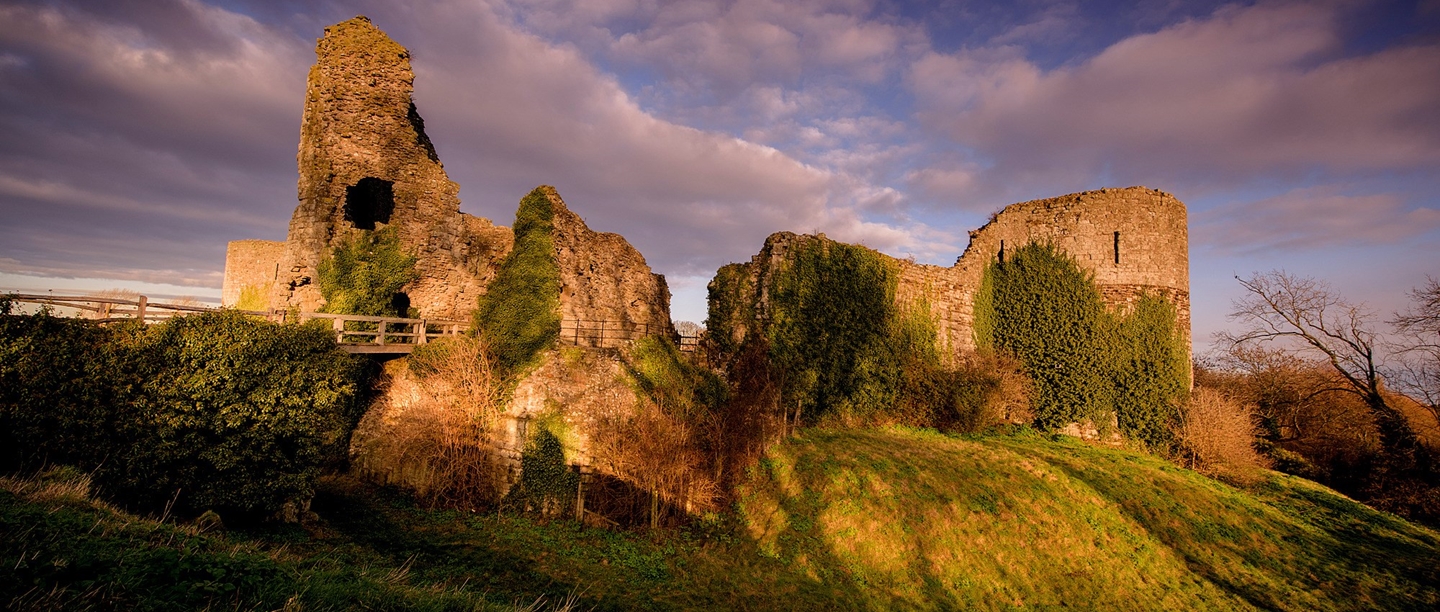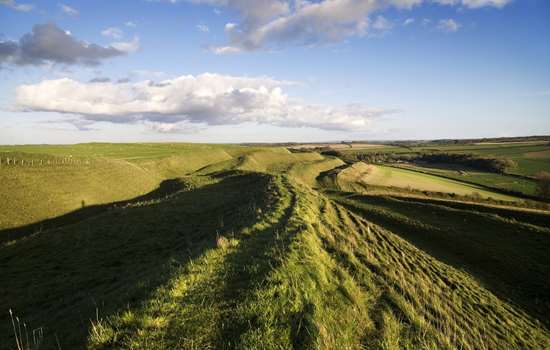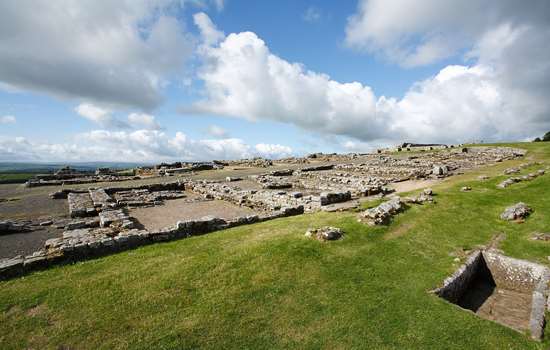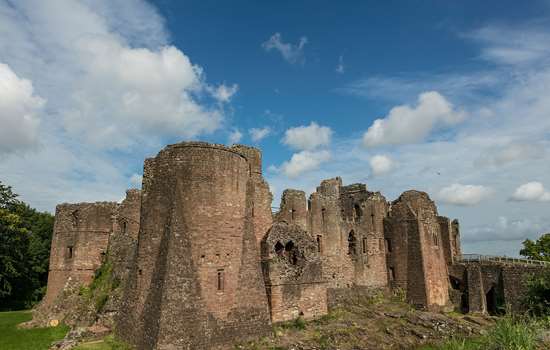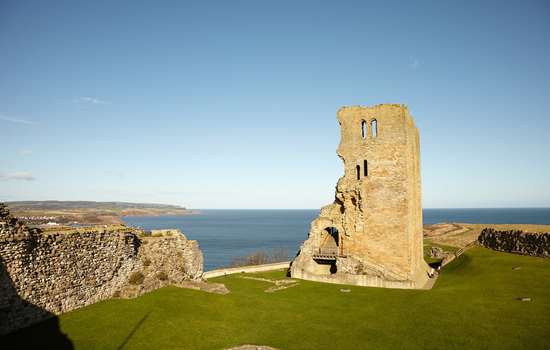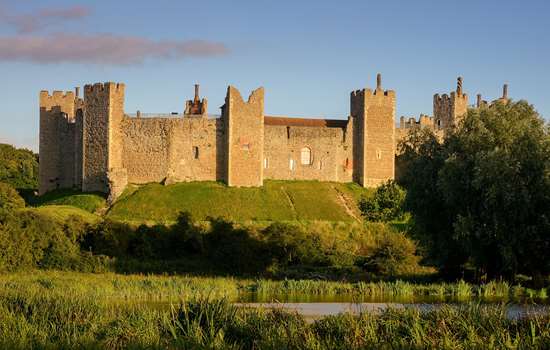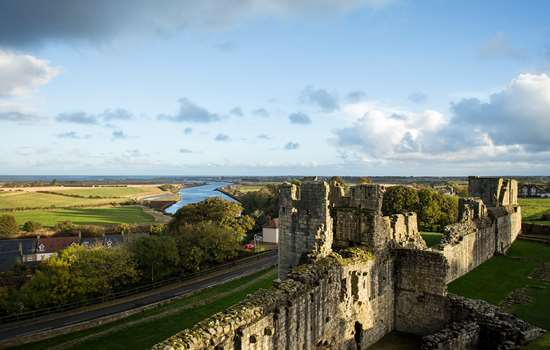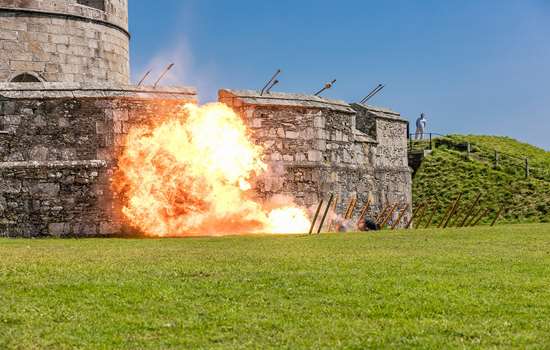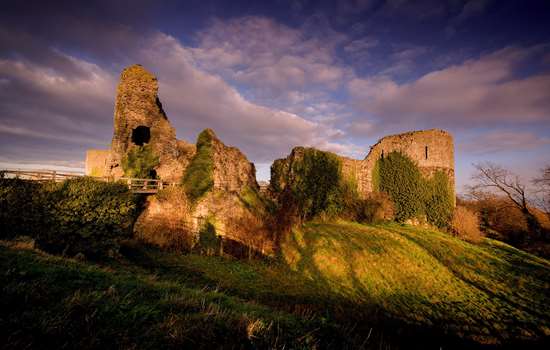Prehistoric Hillforts
In many parts of the country, hillforts are among the most enduring features of our landscape. There are over 1200 hillforts in England, and English Heritage cares for six of them. The earliest forts were probably built around 900BC, with many constructed between 800 and 700BC. These usually had a single circuit of ramparts, but by around 400BC some hillforts - like spectacular Maiden Castle and Old Oswestry - were being strengthened with multiple rings of defences.
Hillforts had a wide range of uses, and defence was just one of them. They were places to protect grain, cattle and treasure. They provided spaces for people to live, trade and celebrate. It’s also likely that they were used as refuges in times of conflict, and there is evidence that life in a hillfort wasn’t wholly peaceful - hoards of sling-stones have been found at Blackbury Camp, and 20,000 pebbles were found near one of the entrances to Maiden Castle. Formidable ramparts, ditches, wooden palisades and well-guarded entrances would have made them difficult to attack. Sited in dominant positions, hillforts also proclaimed the prestige of the prehistoric people who raised them. Their strategic sites were sometimes re-used for fortresses of later periods, as at Beeston Castle and Old Sarum. Most hillforts had been abandoned by 100BC. Around that time larger defended settlements called oppida were being created in lowland areas, including Lexden Earthworks (Colchester) and Stanwick Iron Age Fortifications in North Yorkshire. These were demarcated by ditches and ramparts, and there’s evidence that they were centres of government, industry and craft specialisation.
Roman Forts
Julius Caesar raided Britain in 55 and 54 BC, but the full-scale Roman conquest of the island didn’t begin until AD 43. Disciplined and well-armed, the Romans eventually defeated the Britons, and they built forts and fortresses all over the country to provide secure accommodation for their troops. There were more Roman forts in Britain than in almost any other part of the Empire. English Heritage cares for eleven of them.
They ranged from big 'fortresses' like Chester and York, the permanent bases of a legion, to the much more numerous forts manned by 1,000 or 500 'auxiliaries'. Whether large or small, they generally followed a similar playing-card design, with an entrance on each side and a headquarters building at the centre. Though sometimes built - like Hardknott Roman Fort - in very isolated places, they were always linked by roads.
Earlier forts were defended by turf and timber ramparts, ditches and wooden towers, although from the 2nd century AD many were rebuilt in stone. The Roman garrisons would have assailed attackers with arrows and javelins, or even mechanical catapults and stone-throwing 'engines'.
The best place to see Roman forts is along spectacular Hadrian's Wall, the 73-mile long northern frontier of Roman Britain. Studded with milecastles and turrets, the Wall was backed up by sixteen strong forts, including Birdoswald, Chesters and Housesteads Roman Forts.
Many Roman towns were also surrounded by ditches, and later stone walls. You can still see the remains of these at Silchester Roman Town Walls and Roman Wall, St Albans. From the end of the 3rd century a chain of powerful new-style 'Saxon Shore' forts were built along the south and east coasts, including Pevensey Castle, Portchester Castle and Richborough Roman Fort. With thick stone walls often reinforced by projecting towers, they were intended to beat off the Saxon sea-raiders who eventually overwhelmed Roman Britain.
The Anglo-Saxons themselves were not great fortress builders. But from the late 9th century King Alfred and his successors constructed a series of 'burhs' to defend their people from the Vikings. Examples of these 'fortresses of the folk' include Lydford Saxon Town and Daws Castle.
The first castles
The Norman victory at the Battle of Hastings in 1066 marked the beginning of the age of the castle in England. Even before the battle, William the Conqueror built a castle at Hastings, near his landing place. Over the next 150 years, the Normans covered the country with them, and built around 1,000 in England and Wales. Castles were something quite new in England. As the chronicler, Orderic Vitalis explained, 'The fortifications that the Normans called castles were scarcely known in the English provinces, and so the English – in spite of their courage and love of fighting – could put up only a weak resistance to their enemies.'
So what exactly were they?
Ringworks had banks and ditches forming a rough circle with a palisade (wooden fence) on top. Motte and bailey designs were very common, and had a mound (the ‘motte’) topped by a wooden tower or keep and a defended enclosure (the ‘bailey’) alongside. Often (as at Totnes Castle) the wooden defences were later replaced in stone. Elsewhere, as at Eynsford Castle, there was no motte, but simply a strongly walled enclosure. These castles housed Norman nobles and their families, as well as knights and soldiers”. They were built in strategic positions across the country--sometimes on the sites of prehistoric or Roman strongholds-- and enabled the Normans to subjugate the English and successfully control their conquered territories.
Stone Keeps
By the 12th century those who could afford to were building stone keeps along the lines of those William the Conqueror raised at London and Colchester. Henry I and particularly Henry II spent lots of money building strong keeps at Dover Castle, Scarborough Castle, Orford Castle and many other places, and many of their barons followed suit, for example at Kenilworth Castle. These great towers were much easier to defend than wooden towers, and their walls could be very thick - in places, the walls of the keep at Dover are six metres thick. Apart from dropping stones or shooting arrows from the roof or windows, great towers didn’t give defenders much of an opportunity to strike back at the attackers. They were also vulnerable to catapults and undermining - where attackers hacked away at the outer face of the walls and placed wooden pit props under the overhanging masonry created, before setting fire to them, as at the siege of Rochester Castle.
Late 12th and 13th century
From the later 12th century, the focus of castle-building shifted from keeps to outer defences--gatehouses and enclosure walls. Gatehouses, the most vulnerable point of the castle, often became mini-castles in themselves, as at Dunstanburgh Castle, with towers and barbicans guarding their approaches, as at Helmsley Castle.
Walls were made taller to stop missiles being flung over them, and to give extra velocity to missiles aimed at attackers. Towers were built to project from the walls, square at first - as at Framlingham Castle - but later round. These increased the defenders' field of fire and allowed them to shoot down from the towers at attackers on the wall-walks.
Defenders could also shoot longbows and crossbows through loopholes in the walls, or from behind battlements on the wall-tops. Projecting galleries made of stone or timber might extend over the edges of wall-walks, so that defenders could shoot or drop missiles on attackers immediately below. Moats or even artificial lakes (as at Kenilworth Castle) made it impossible for besiegers to undermine the walls. The most powerful type of medieval stronghold was the 'concentric' castle, which featured two rings of mutually supporting towered walls, one inside the other. Attackers had to take them section by section and tower by tower, and even then had a second set of defences to overcome. Dover Castle, as developed in the 13th century, is the earliest and foremost English example of a concentric fortress.
14th and 15th century
During the later middle ages castles became showier and more comfortable. Medieval households were getting larger, and the people in charge wanted more privacy so started building larger ranges within the castle with more rooms. The buildings of new 'quadrangular castles' like Bodiam Castle and Farleigh Hungerford Castle were set around a central courtyard, with a tower at each corner, so their inner faces could risk large light-giving windows. The Percy family's lavish Great Tower at Warkworth Castle, safe within strong outer walls, also has big windows, as well as proclaiming family pride with a massive carved heraldic lion on its 'show front'. Older strongholds like Middleham Castle and Kenilworth Castle were likewise updated with ranges of luxurious living quarters. Cannon, in use from the late 14th century, were at first unwieldy and hard to transport. So they were more useful for defending than attacking castles: Berry Pomeroy Castle and Kirby Muxloe Castle are equipped with 'gunports' through which small fixed cannon could be fired. At the very end of the middle ages, Dartmouth Castle was the first English fortress purpose-built for heavy 'ship-sinking' guns.
Tudors and Stuarts
Under the strong centralised rule of the Tudors, baronial castle-building ceased. But Henry VIII adopted the new artillery technology for a chain of revolutionary coastal 'gun forts' - the first co-ordinated system of national defence since Roman times. Built to resist threatened invasion by Catholic Spain and France, their squat, rounded form was intended to minimise the effect of incoming shot, while providing all-round fire-power from as many as 140 heavy guns, as well as smaller hand-guns for close-quarter defence.
We care for nearly all of them, including Deal Castle, Pendennis Castle, Portland Castle, St Mawes Castle, Walmer Castle and Yarmouth Castle.
But fortresses still had an important role to play in the defence of the nation. The prospect of Dutch raids in the 1660s prompted the development of the Royal Citadel, Plymouth and impressive Tilbury Fort, and the Jacobite Risings of 1715 and 1745-6 (when Carlisle Castle was the last English stronghold ever to be besieged) provoked the reinforcement of many northern fortresses. Many castles slipped into decline as their owners moved into country houses, but others like Kenilworth continued to be updated where a magnificent garden was added next to the great tower. During the English Civil War, long abandoned castles in England and Wales were readied for war. Even against cannon which they were never designed to defend against many survived long sieges. However, many were demolished (slighted) during the conflict, like Kenilworth, Scarborough, and Helmsley, leaving them as ruined shells. In the 18th and 19th centuries, Romanticism appreciated the ruins for their history and beauty.
World wars and after
During the First World War, particularly after the German bombardment of Whitby Abbey and Scarborough Castle, temporary artillery batteries were built along the coast, and older forts like Landguard Fort and Pendennis Castle were rearmed. Ancient Tynemouth Castle, which had been frequently updated since the middle ages, was also pressed back into service. But the supremacy of the Royal Navy meant that none of these defences were put to the test.
After the fall of France in June 1940, invasion seemed imminent. Old castles and forts were re-commissioned once again as command centres (like the Secret Wartime Tunnels at Dover Castle), or to house guns to defend the coast from air and sea attacks (like Pendennis Castle and Hurst Castle). Makeshift strongpoints were hurriedly improvised in the summer of 1940, including over 20,000 concrete 'pill-boxes'. Some of the most remarkable Second World War defences can still be seen at Pevensey Castle - where machine-gun posts were built into the walls and camouflaged with 'Roman' masonry.
The German invasion never materialised. But during the 'Cold War' new technology confronted the nightmare of nuclear destruction. A Regional Seat of Government was buried deep beneath Dover Castle. York Cold War Bunker stood ready to monitor nuclear fall-out. The 3,000-year-long story of England's defences continued.
More to discover
Keep exploring the story of England's castles on our Love Castles page.
Find out what life was really like in a medieval castle, see real castles similar to those from film and TV, and get involved by sharing your stories and photos with us using #LoveCastles on social media.
More to explore
-
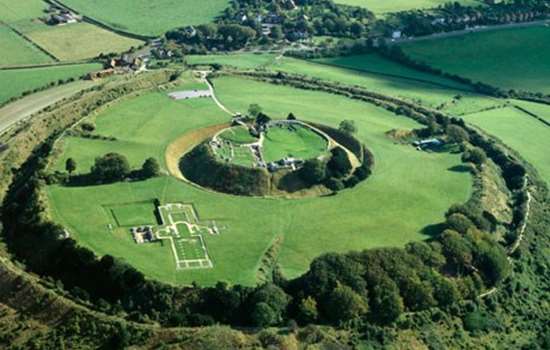
More historic walking guides
Hike through history with our guides to countryside walks around stately homes, castles and abbeys.
-
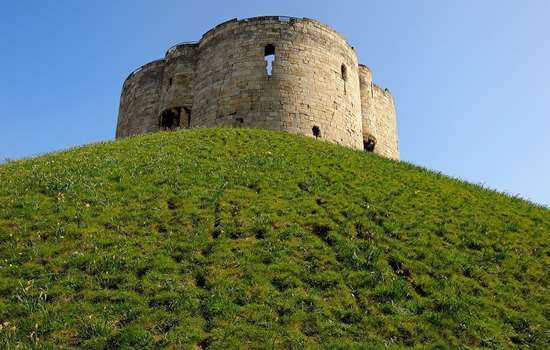
#LoveCastles
We're celebrating England's castles, forts and defences and their unique stories. Which is your favourite?
-

Get more with membership
Join English Heritage from just £4 a month to enjoy unlimited access to more than 400 historic places.
